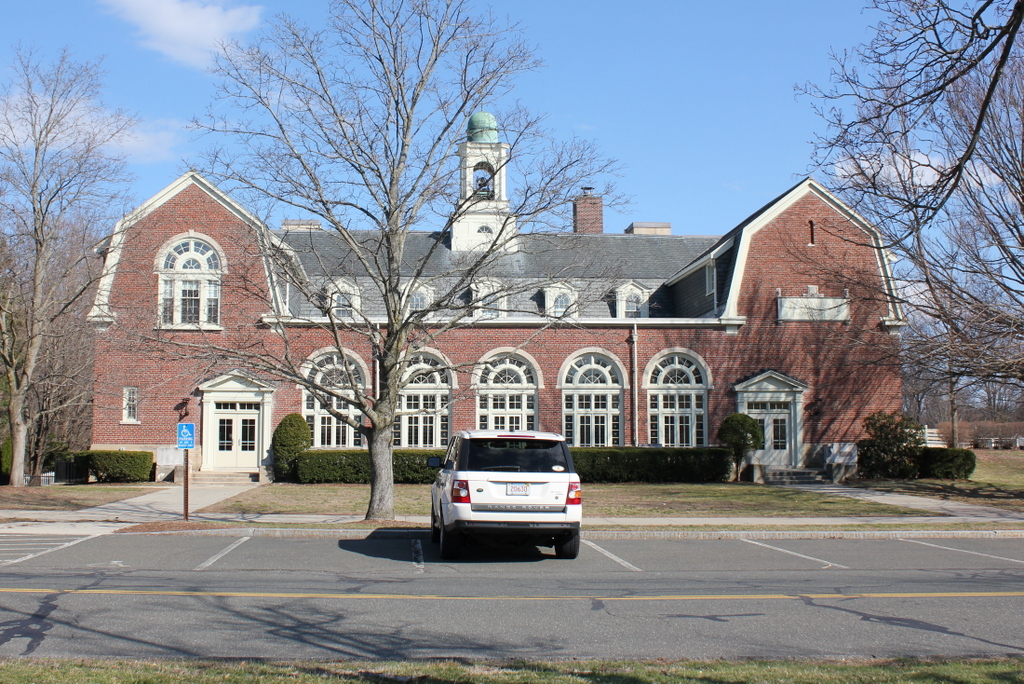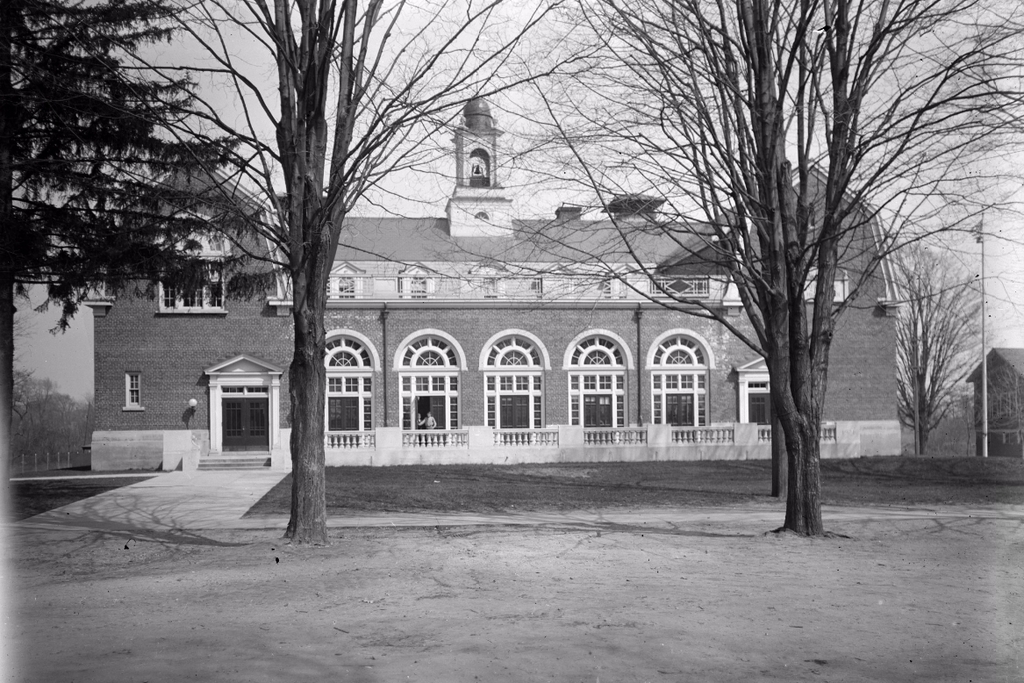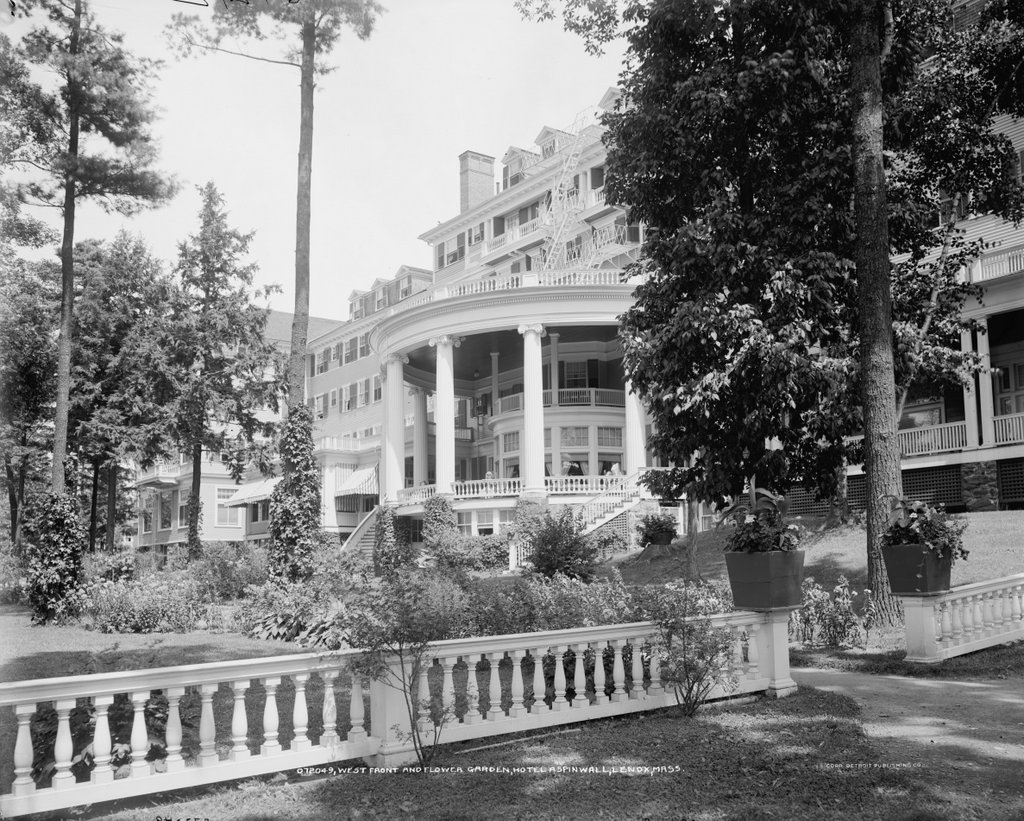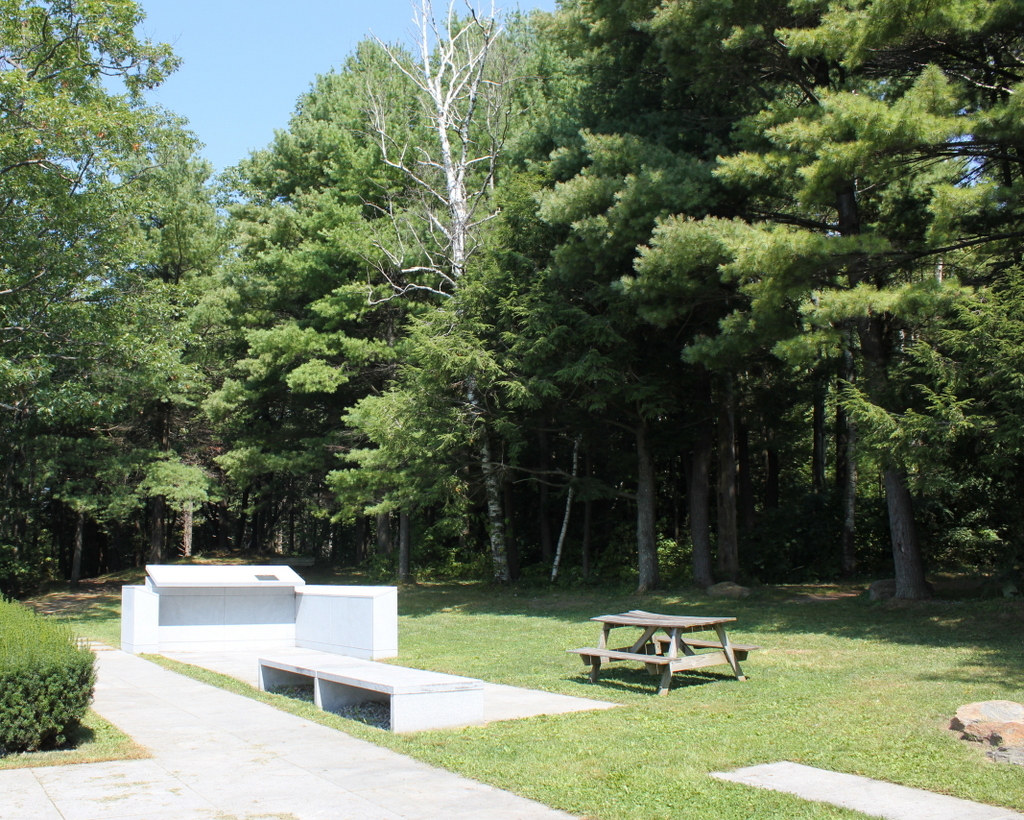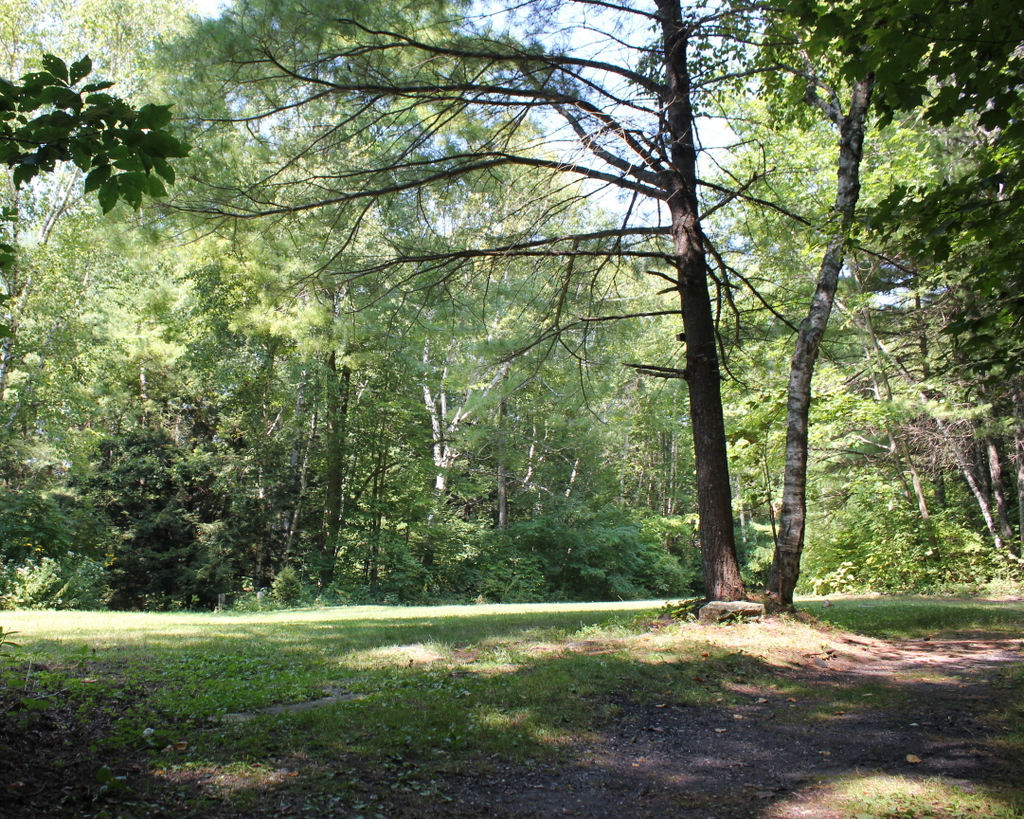The east side of the Hotel Aspinwall, as seen around 1905-1915. Image courtesy of the Library of Congress, Detroit Publishing Company Collection.
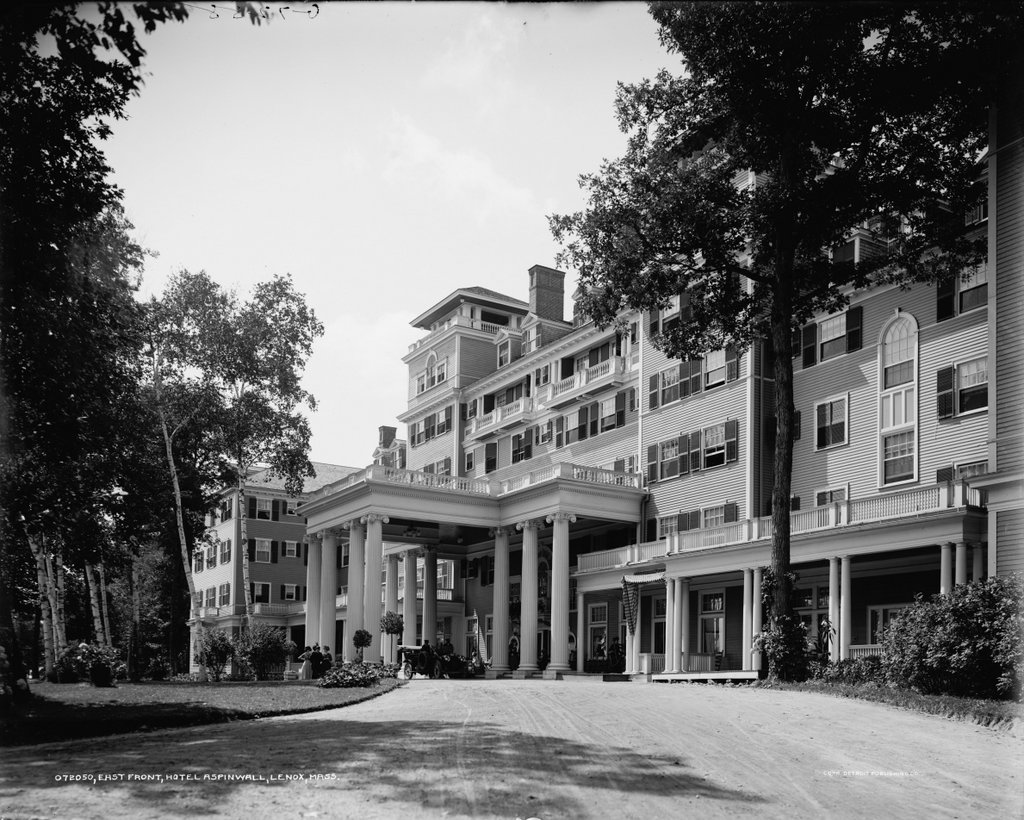
The scene in 2015:
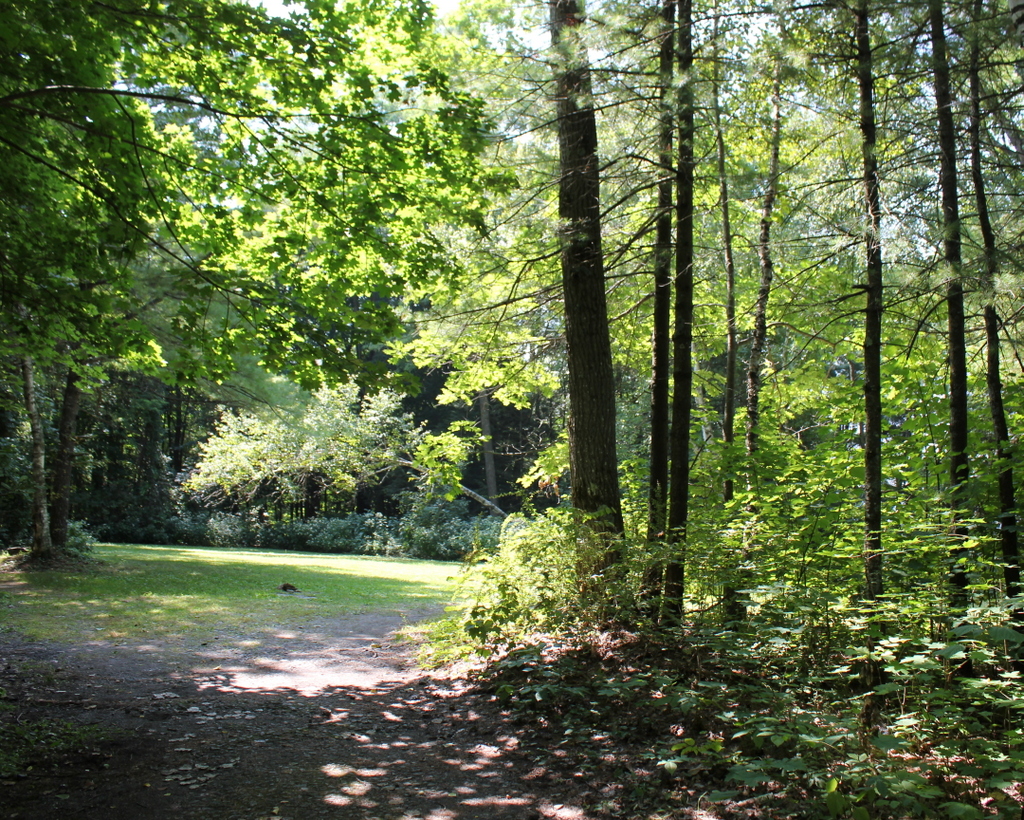
As mentioned in the post featuring the hotel’s entrance, the Hotel Aspinwall was built in 1902 by lawyer, businessman, and Civil War officer Thomas H. Hubbard. It was located on over 400 acres of land atop a hill just north of the center of Lenox, and with 225 guest rooms accommodating up to 425 people, it was among the largest hotels in the Berkshires.
The hotel attracted a number of notable guests over the years. As the Berkshire Eagle described it in a 1956 feature article, “If the millionaires who used to summer in Lenox during the early 20th century were not among those owning estates here, they probably stayed at the old Aspinwall Hotel.” The article identified guests such as Theodore Roosevelt, Franklin D. Roosevelt, actress Lillian Russell, Senator and railroad magnate Chauncey Depew, Massachusetts governor James Michael Curley, New York mayor Seth Low, and Austro-Hungarian ambassador Konstantin Dumba. Another news article, published in the North Adams Transcript, indicated that John D. Rockefeller, Sr. was also a frequent guest at the hotel.
By the early 1930s, America was in the midst of the Great Depression, and many historic grand hotels were struggling. However, here in Lenox, the Hotel Aspinwall was expanding. They had recently added a baseball field and a 9-hole golf course, and they were working on adding more trails and bridle paths on the property when a fire started early in the morning on April 25, 1931. The hotel had not yet opened for the season, but the secluded location was reportedly popular for “petting parties,” as contemporary newspapers described it. The exact source of the fire was never identified, but most likely theory seems to be that it was started with a carelessly disposed cigarette from one of these parties.
The fire was already well underway by the time the fire department learned of it, and at that point there was no way to save it. The hotel’s own firefighting systems had been shut down for the winter, and the closest fire hydrant was nearly a mile away. There was not enough water pressure in the 4,000-foot hose from the hydrant to effectively fight the fire, so most of the firefighting efforts were on preventing the fire from spreading to the other buildings or to the forest.
The rest of the property was saved from the fire, but the hotel was never rebuilt, and the forest soon began to reclaim the property. In 1956, the land was sold to the town for just $12,000 and converted into a public park. Now known as Kennedy Park, the hotel’s former driveway and trails are now used by hikers and cross country skiers, and there is little sign of the hotel that once stood here. Based on maps that showed the hotel, this clearing appears to be approximately the center of the building, although without any identifiable landmarks left from the first photo, it is impossible to recreate the exact spot.
